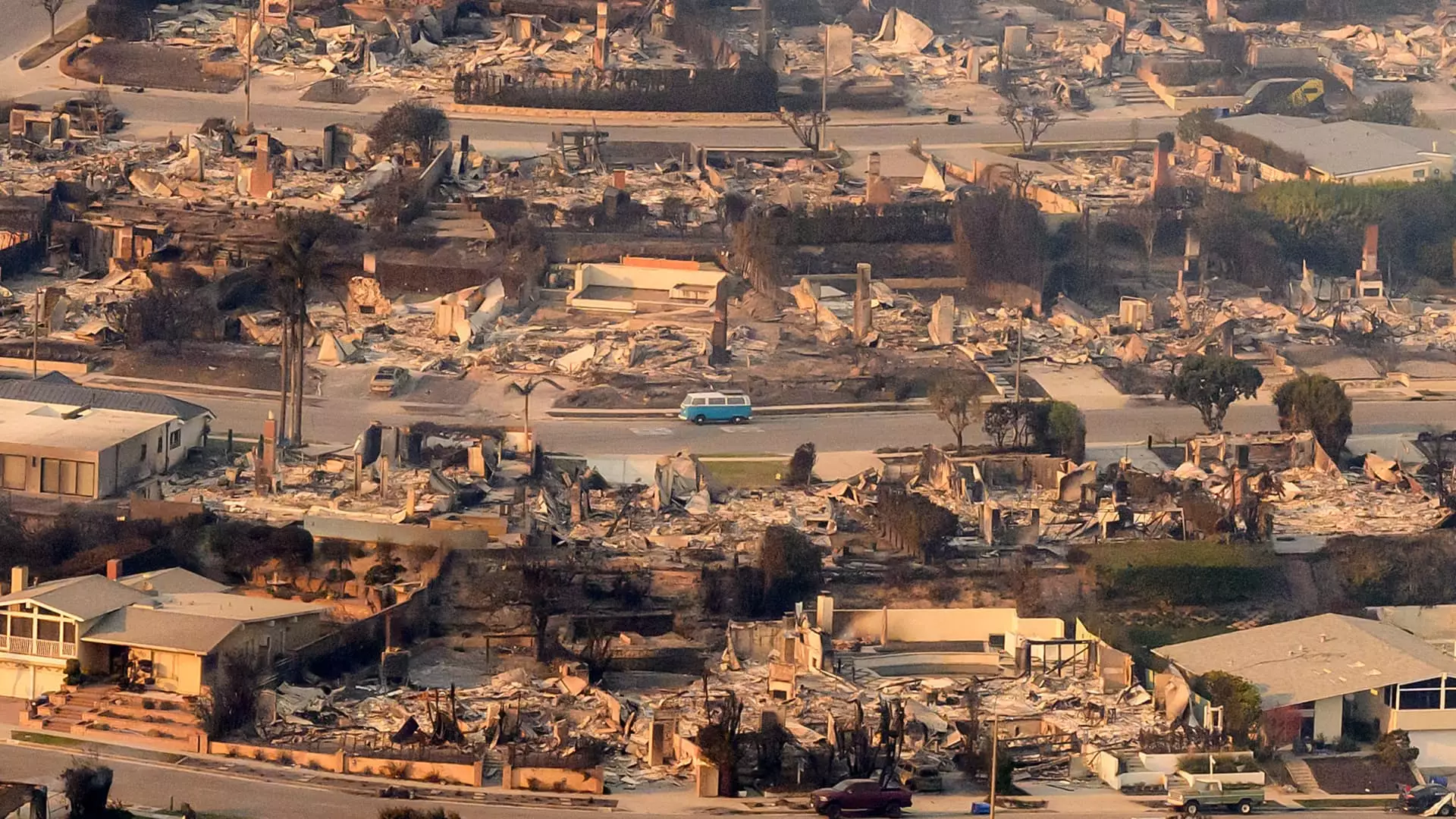Recent wildfires in Los Angeles have left a devastating impact, both environmentally and financially. As flames ravaged through neighborhoods, the catastrophic consequences extended beyond mere loss of homes; they sent shockwaves through the insurance industry. The immediate effect was observable in the stock market, where insurers heavily invested in California’s homeowners’ market witnessed significant declines. Companies like Allstate, Chubb, AIG, and Travelers reported drops of 4% and 2% in share prices, respectively, making them stand out among the largest decliners on the S&P 500.
The Financial Exposure of Major Insurers
According to JPMorgan’s analysis, Allstate, Chubb, and Travelers are particularly vulnerable due to their substantial exposure to the insured loss landscape in Californian wildfires. The focus on high-net-worth clients, especially with Chubb’s operational strategy, has heightened concerns about the potential financial fallout. The severity of this wildfire season is underscored by projections suggesting insured losses might surpass a staggering $20 billion—a figure that, if exceeded, could potentially eclipse the $12.5 billion incurred during the infamous 2018 Camp Fire, marking a significant benchmark in historical wildfire damages.
The reach of this crisis extends to the reinsurers who support these primary insurers. Firms such as Arch Capital Group and RenaissanceRe Holdings also felt the pinch, experiencing declines of 2% and 1.5% respectively. As loss estimations increase, JPMorgan warns that the fracturing of reinsurance attachments might occur, potentially destabilizing the financial architecture within the insurance industry. Such dynamics could lead to a tightening of available coverage or increased premiums in the state, further complicating matters for homeowners seeking protection against these disasters.
The Scale of Destruction
With over 17,000 acres scorched and more than 1,000 structures destroyed, the Palisades Fire, which is currently the largest of five wildfires, epitomizes the severity of this situation. The affluent neighborhoods affected are not only filled with luxurious residences—where the median home price exceeds $3 million—but also face the broader ramifications of decreased property values and rising insurance costs. The record-setting scale of these wildfires not only threatens local communities but could destabilize the insurance market, prompting a reevaluation of risk assessment methods.
In light of the devastating fires, insurance companies are taking proactive measures to understand the extent of their liabilities. They have reached out to utility companies like Southern California Edison to secure evidence related to the fire’s origins. This aspect highlights the strategic pivot insurers are taking, aiming to decipher the root causes to safeguard their interests and manage potential claims more effectively.
The ongoing Los Angeles wildfires represent a crucial juncture for the insurance sector in California and beyond. As insured losses climb, the market must adapt to the unprecedented challenges posed by climate-related events. Stakeholders will need to re-evaluate their strategies and risk models, ensuring they are resilient enough to withstand future catastrophes while continuing to provide essential services to homeowners amid an ever-evolving landscape of risk.

